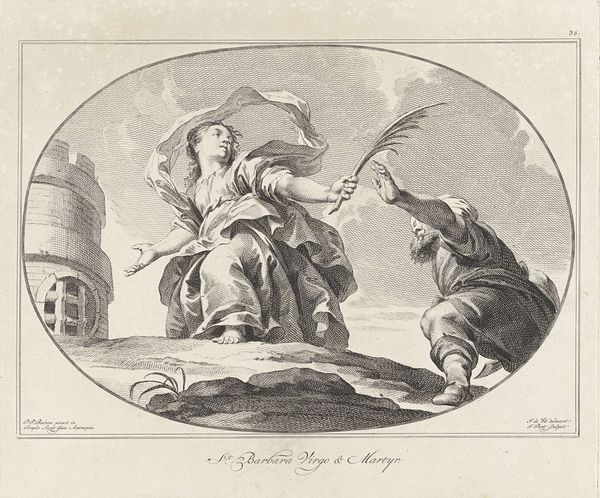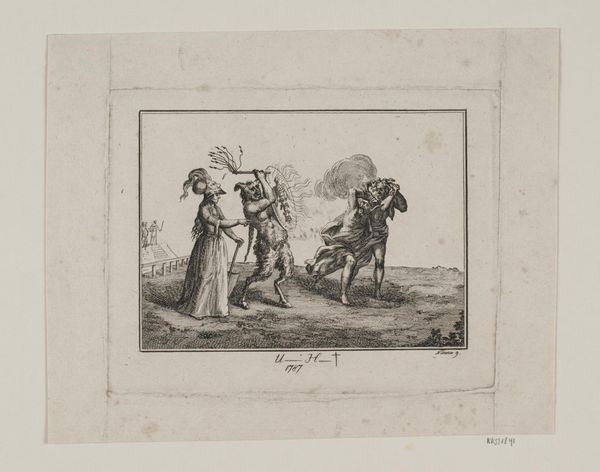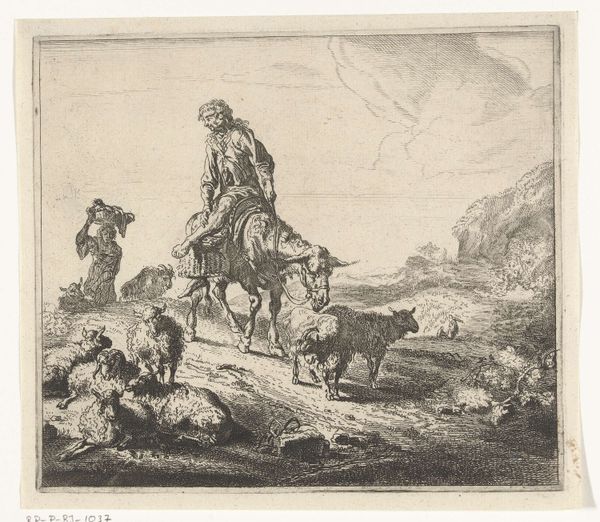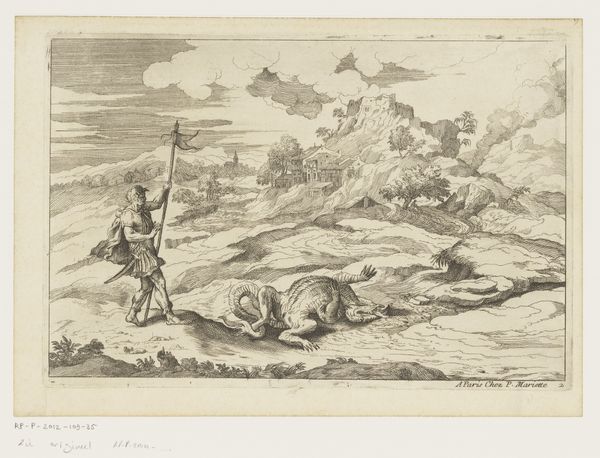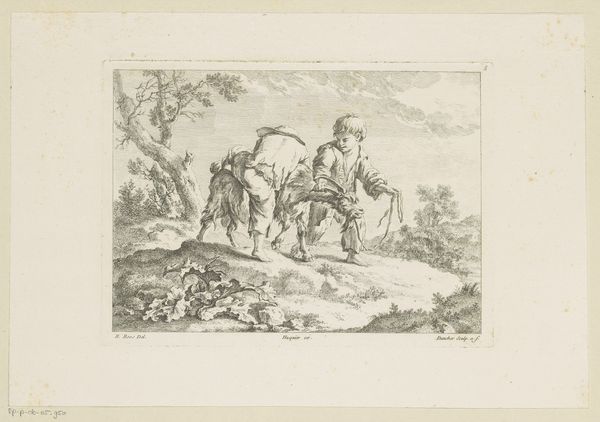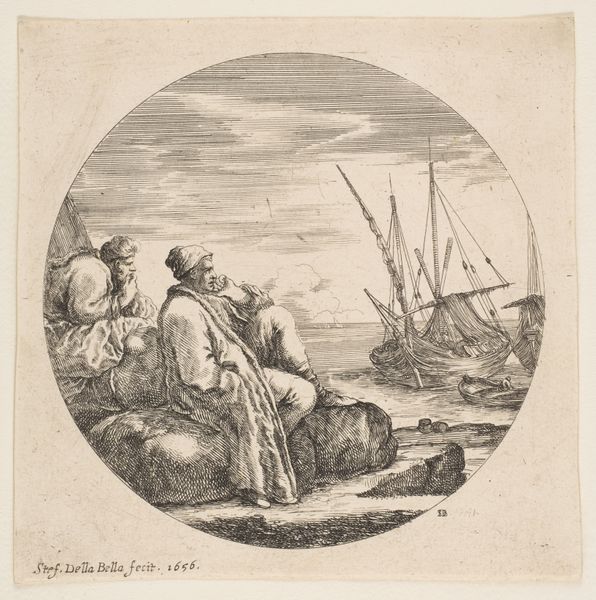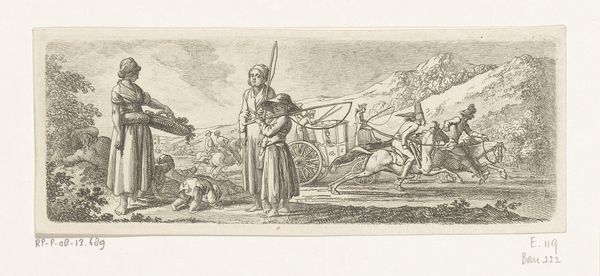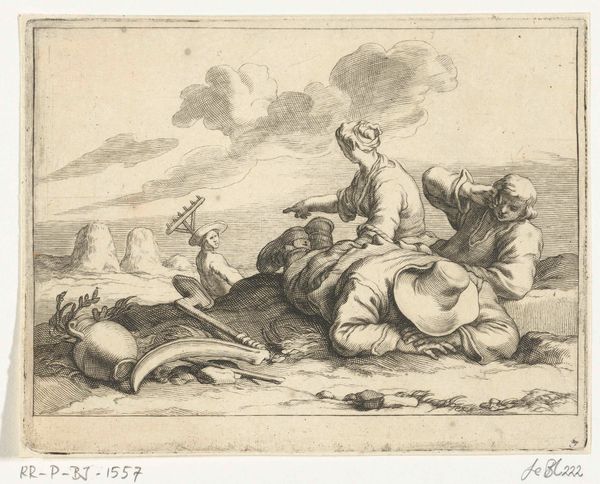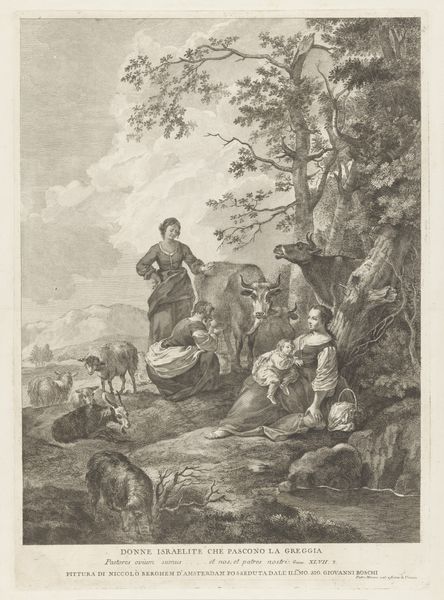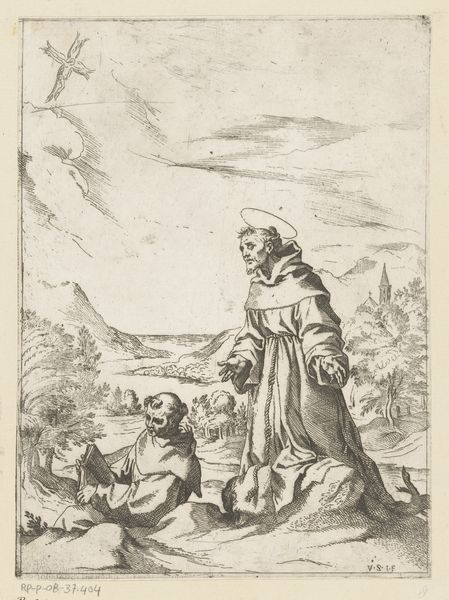
#
light pencil work
#
pencil sketch
#
old engraving style
#
caricature
#
cartoon sketch
#
personal sketchbook
#
sketchbook drawing
#
pencil work
#
storyboard and sketchbook work
#
cartoon carciture
Dimensions: height 339 mm, width 406 mm
Copyright: Rijks Museum: Open Domain
This print of Saint Margaret, now in the Rijksmuseum, was made by Jan Punt, an 18th-century Dutch artist who specialized in reproductive engravings. The printmaking process begins with a metal plate, usually copper, into which the artist etches a design using acid. Ink is then applied to the plate, and the surface is wiped clean, leaving ink only in the etched lines. Finally, paper is pressed against the plate, transferring the image. While seemingly simple, the technique demands great skill. Look closely, and you will see how subtle variations in line weight and density create a sense of depth and texture. The hatching suggests the play of light on Margaret’s face, the folds of her dress, and the menacing form of the dragon. This reproductive method made images accessible to a wide audience, contributing to the spread of knowledge, religious ideology, and, ultimately, to the development of a modern visual culture. So, next time you see a print, remember the labor, skill, and social context embedded in its very making.
Comments
No comments
Be the first to comment and join the conversation on the ultimate creative platform.
